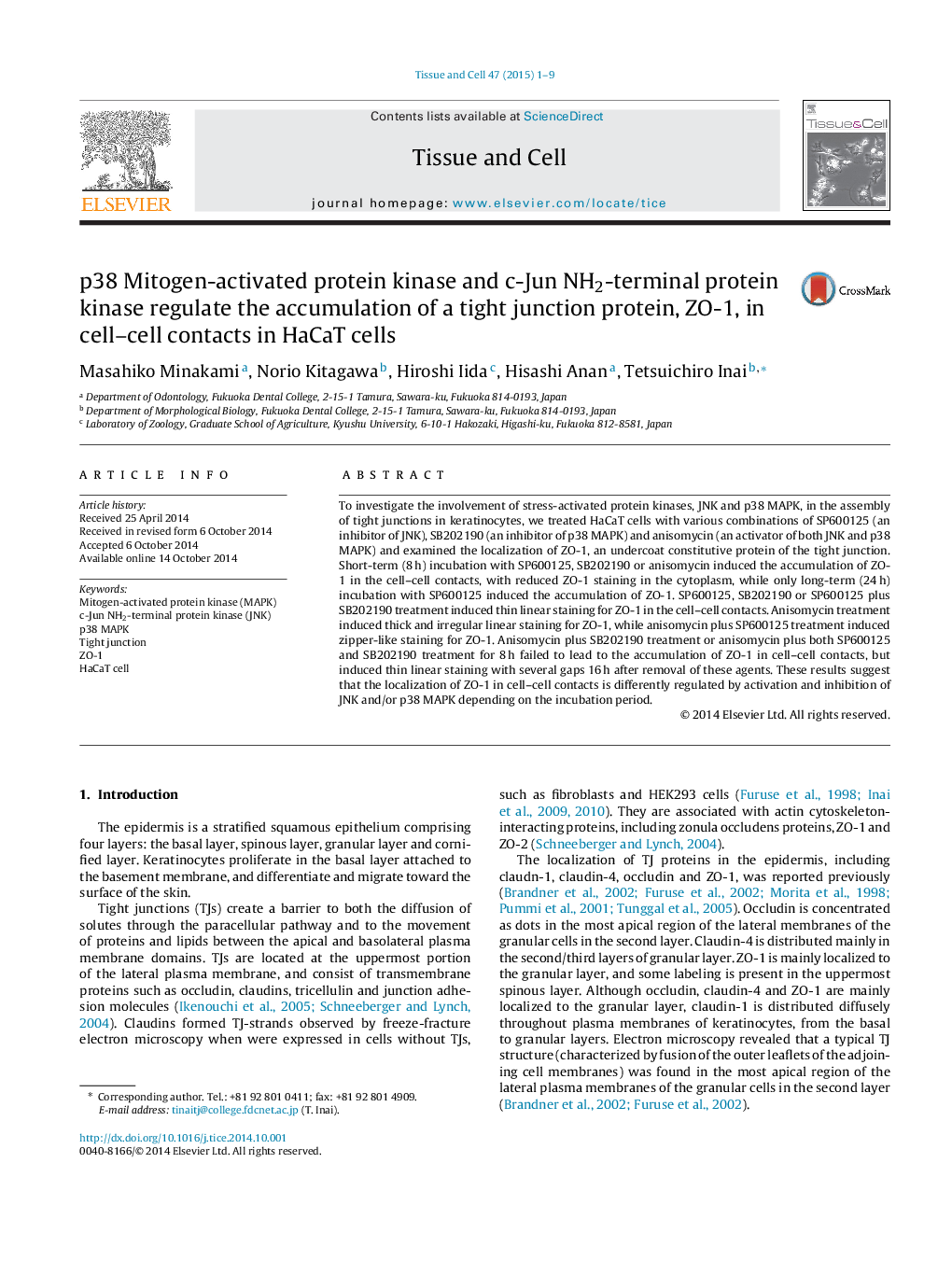| کد مقاله | کد نشریه | سال انتشار | مقاله انگلیسی | نسخه تمام متن |
|---|---|---|---|---|
| 2203666 | 1100515 | 2015 | 9 صفحه PDF | دانلود رایگان |

• Slight increase or marked decrease of phosphorylated p38 induced continuous thin linear staining for ZO-1 in cell–cell contacts in HaCaT cells.
• Slight increase of phosphorylated JNK and marked increase of phosphorylated p38 induced thick linear and/or zipper-like staining for ZO-1 in cell–cell contacts.
• Marked increase of both phosphorylated JNK and phosphorylated p38 failed to accumulate ZO-1 in cell–cell contacts.
• The accumulation of ZO-1 in cell–cell contacts is differently regulated by JNK and/or p38 in HaCaT cells.
To investigate the involvement of stress-activated protein kinases, JNK and p38 MAPK, in the assembly of tight junctions in keratinocytes, we treated HaCaT cells with various combinations of SP600125 (an inhibitor of JNK), SB202190 (an inhibitor of p38 MAPK) and anisomycin (an activator of both JNK and p38 MAPK) and examined the localization of ZO-1, an undercoat constitutive protein of the tight junction. Short-term (8 h) incubation with SP600125, SB202190 or anisomycin induced the accumulation of ZO-1 in the cell–cell contacts, with reduced ZO-1 staining in the cytoplasm, while only long-term (24 h) incubation with SP600125 induced the accumulation of ZO-1. SP600125, SB202190 or SP600125 plus SB202190 treatment induced thin linear staining for ZO-1 in the cell–cell contacts. Anisomycin treatment induced thick and irregular linear staining for ZO-1, while anisomycin plus SP600125 treatment induced zipper-like staining for ZO-1. Anisomycin plus SB202190 treatment or anisomycin plus both SP600125 and SB202190 treatment for 8 h failed to lead to the accumulation of ZO-1 in cell–cell contacts, but induced thin linear staining with several gaps 16 h after removal of these agents. These results suggest that the localization of ZO-1 in cell–cell contacts is differently regulated by activation and inhibition of JNK and/or p38 MAPK depending on the incubation period.
Figure optionsDownload high-quality image (362 K)Download as PowerPoint slide
Journal: Tissue and Cell - Volume 47, Issue 1, February 2015, Pages 1–9